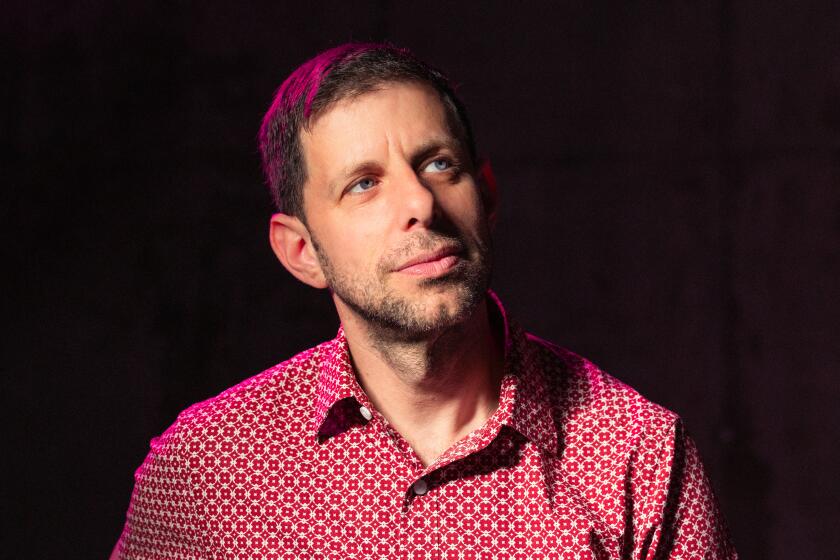Hobbled Arts Limit Our Future
The arts are undervalued. Any examination of budgets or curricula proves the point, and congressional debates underscore it. But those who undervalue the arts have made a huge mistake with much broader ramifications. The arts, despite their reputation of being subjective, emotional, nonintellectual pursuits, make science and invention possible. As a scientist and inventor who has had a lifetime association with art and music, I know whereof I speak.
Scientists and engineers need much more than the objective languages of logic and mathematics to be creative. They must learn to observe as acutely as artists and to visualize things in their minds as concretely. They must learn to recognize and invent patterns like composers or poets, to make models of their visions like sculptors and to manipulate the tools of their trade and “play” their high-tech instruments with the same virtuosity as musical performers.
The best of them become so intimately involved in their work that they experience what Nobel laureate Barbara McClintock called “a feeling for the organism”: a subjective identification with the system being studied so complete that the scientist becomes an actor in it, a virus, an electron, totally out of body and in character. Then scientists must communicate their results in the form of graphs, models, blueprints, patents or reports that require solving aesthetic problems of design, language and clarity that would challenge any artist or writer. None of these skills is formally taught in science classes, but all of them can be found in the arts.
In fact, participation in the arts fosters professional scientific success. I recently directed a study with my mother, psychologist Maurine Bernstein, and statistician Helen Gamier of UCLA that demonstrated a significant correlation between artistic hobbies, specific forms of thinking (visual, kinesthetic, verbal, etc.) and success as a scientist. The Nobel Prize winners and most of the members of the National Academy of Sciences in our study were universally artistic and/or musical, most had several arts-related hobbies as adults and they utilized a wide range of arts-associated mental thinking tools such as three-dimensional mental imagery, kinesthetic feelings and pattern formation. Their less successful colleagues did not share either their arts interests or their arts-related thinking skills.
Many other studies parallel ours. One found that neither mathematical nor verbal reasoning tests are useful indicators for future careers in science and technology, but high visual imaging ability is. Another found that high aptitude in arts and music are much more predictive of career success in any field than the results of grades, IQ, achievement or any other standardized measures. Business executives who head major technology firms often are very talented artists, musicians and photographers.
These adult findings clearly are the result of childhood experiences. Other studies have shown that general learning skills among children are improved by musical training. Frances H. Rauscher’s work at UC Irvine correlates musical training and increased aptitude on various visual thinking tests among children. Similar findings have been reported for adolescents and college students.
But I do not want to advocate art simply for utilitarian purposes. I also advocate art for art’s sake. Artists, too, do research. Their research is into perception, structure, design and communication. Thus, art for art’s sake often is in advance of science and technology. Modern examples are legion. Abbot H. Thayer, a turn-of-the-century nature painter sometimes described as Audubon’s successor, invented the concept of camouflage, relating its importance in evolution to the protection of soldiers and their equipment on the battlefield. Similarly, the geodesic domes invented by Buckminster Fuller revolutionized our understanding of the structures of viruses and of carbon compounds called “fullerenes.” “Tensegrity,” another fundamental structural motif co-invented by Fuller and fellow artist Kenneth Snelson, now is being considered as a means of constructing low-mass space platforms; Harvard biologists recently have suggested that it is the principle controlling the shapes of human cells.
There are hundreds of other examples from art, music and even dance in which the artist has provided insight that has made invention possible. The process of designing and etching a piece of artwork differs in no substantive way from the process of designing and etching a computer chip. Our modern technology would not exist without the prior art.
My point is simple: By demeaning the arts, as we do when we marginalize them in our curricula and funding, we sap the roots of imagination and invention. Art done for art’s sake is valuable. It is valuable as a source of skills, tools for thinking and inventing, insights, processes and even new phenomena. To hobble the arts is to hamstring our future. Even scientists and inventors can agree to that.
More to Read
The biggest entertainment stories
Get our big stories about Hollywood, film, television, music, arts, culture and more right in your inbox as soon as they publish.
You may occasionally receive promotional content from the Los Angeles Times.






